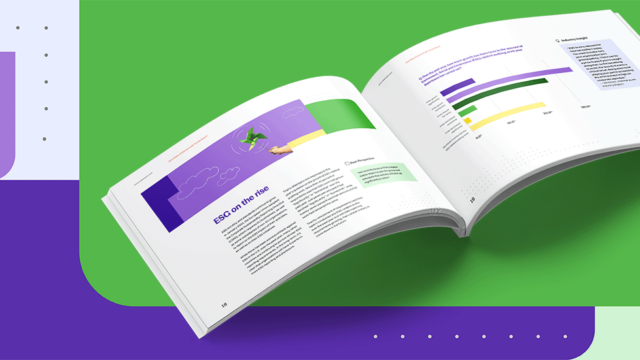
5 Operational Risk Management Best Practices
Discover these key ways internal auditors mitigate risks and improve decision-making for businesses.
If the global landscape of the past few years is anything to go by, you never know what is around the corner that could impact a business. From pandemics and natural disasters to fraud, companies constantly face unpredictable internal and external threats. Effective operational risk management is crucial for organizations to safeguard their reputation, financial stability and overall performance.
As part of the audit process, you may need to identify and address these risks. This article will delve into our five best practices for operational risk management. They can help organizations proactively manage operational risks, reduce their potential impact and assure resilience and sustainability in today’s dynamic business environment.
What is operational risk management and why does it matter?
Operational risk management refers to the process of identifying and mitigating the risk of loss in a business. It involves assessing how internal processes, people, activities or external events could impact the smooth functioning of an organization.
The purposes of operational risk management are many, and they include:
- avoiding financial losses
- protecting your organization’s reputation
- maintaining customer trust
- complying with financial regulations
- ensuring uninterrupted business operations
An example of an operational risk could be a technology failure disrupting important systems or processes. Companies that rely heavily on IT could face being severely impacted if they are hit with a network outage or technology glitch. For example, they could suffer revenue losses from delayed order processing or reputation damage in the loss of customer trust.
Besides technology failures, other operational risks could include:
- human error
- supply chain disruptions
- legal issues
- cyber threats
- fraud and theft
- natural disasters
- changes in laws or regulations
- health and safety issues
- internal process failures
Internal auditors play a central role in protecting their organizations’ interests, upholding compliance standards and ensuring long-term success in the competitive business environment by properly managing operational risks.
5 operational risk management best practices to follow
Here are five key best practices internal audit departments can follow to achieve effective operational risk management:
1. Develop an operational risk framework
Operational risk, unfortunately, lurks in every nook and cranny of a company’s processes, systems and products. Thus, it’s crucial to have an operational risk management framework that spans every level of an organization, from the boardroom to the frontlines. This system should integrate seamlessly into existing risk-mitigating systems.
What should an operational risk framework look like? This framework should be a document that details all the operational risk dimensions for assessing, monitoring and dealing with operational risks. It will:
- identify all possible risks
- determine how likely the risk is to happen and what the consequences will be to the organization, from negligible to catastrophic
- define the limitations of risk accepted by the business – for example, risks necessary for long-term business growth versus risks you can eliminate
- create a system for minimizing or eliminating risks
- determine risk controls and risk management concepts
- define steps for dealing with risks, including how to report risks internally and who is accountable for different risks
Ensure that the board approves this document and reviews it periodically.
2. Automate risk data collection
Collecting data is key in identifying the possible risks to your organization. For auditors, automating the process will save time and provide more accurate data.
Data sources for operational risk management might include internal data collected from operational systems and external data obtained from regulatory reports. Or industry benchmarks and qualitative data gleaned from risk analyses or incident reports.
Leveraging technology and tools to collect and analyze more data can:
- streamline data collection
- bring all data into one platform
- allow you to analyze more data
- save you time and effort
- reduce human error
Internal audit software like Caseware’s can amalgamate data from various sources in one place without doing it manually. Here you can easily and visually analyze data and identify risk trends. You can get real-time access to analytics to ensure you are on top of evolving risks.
3. Identify key risk indicators to monitor
A key risk indicator (KRI) is a metric used to assess the probability that an event and its effects will exceed the organization’s risk appetite, negatively impacting its success.
It is important for businesses to define risk indicators. They help highlight possible damaging risks before they happen, as well as revealing weak processes and control tools. KRIs also help companies monitor risks in between specific risk assessments.
To develop a KRI, you must consider how your organization operates and the vulnerabilities and threats it faces.
A key risk indicator should:
- define the key players that contribute to the organization’s success, like systems, tech, people etc.
- detail risks, their frequency and severity and how to mitigate the risk
- rank how vital different elements of the business are to its success
- rank risks depending on their potential harm
- define which risks are the biggest concern
- define which risk metrics are relevant to the company’s risk profile
- determine metrics to define when risks become serious threats
4. Establish an effective operational risk reporting system
Once you have defined your KRIs and data sources that you will use for reporting, you can begin developing reporting templates.
Create standardized reporting templates that succinctly capture the relevant risk measures and KRIs. You can tailor these for use at various management levels. They should offer insights into operational risk trends, areas of concern and viable remedies for operational risk. Reporting tools and dashboards can also be hugely helpful in providing real-time access to risk data.
Your reporting template should:
- be clear and concise. Utilize visually appealing presentations graphs, tables or infographics to present data.
- include relevant data elements that capture identified risk metrics and KPIs. You may include quantitative information from internal or outside sources and qualitative information from risk analyses or incident reports. Make sure the data items are accurately labeled.
- have tailored versions for different levels of management or audiences. Executive-level reports may include high-level summaries and trends. Operational-level reports might offer more in-depth information and analysis.
Test your reporting template with actual data. Depending on the feedback from stakeholders and whether it captures the intended information, refine as needed.
5. Fine-tune your risk and control assessment methods
Auditors, in conjunction with management and other key organizational stakeholders, should continually monitor and enhance their organization’s strategy of discovering, assessing and mitigating risks and controls.
You should establish processes to regularly:
- review and update your organization’s risk assessment framework
- refine your process of identifying high-impact risk areas and risk documentation
- review the criteria used for risk assessment
- strengthen control assessment procedures
- review past incidents and incorporate lessons
- communicate processes to managers, employees and relevant stakeholders
Improve your operational risk management processes with Caseware
Caseware can help you automate data collection, showing all your data on one platform and in real time, allowing you to make better-informed risk decisions. Contact us today to learn more.







